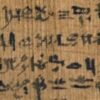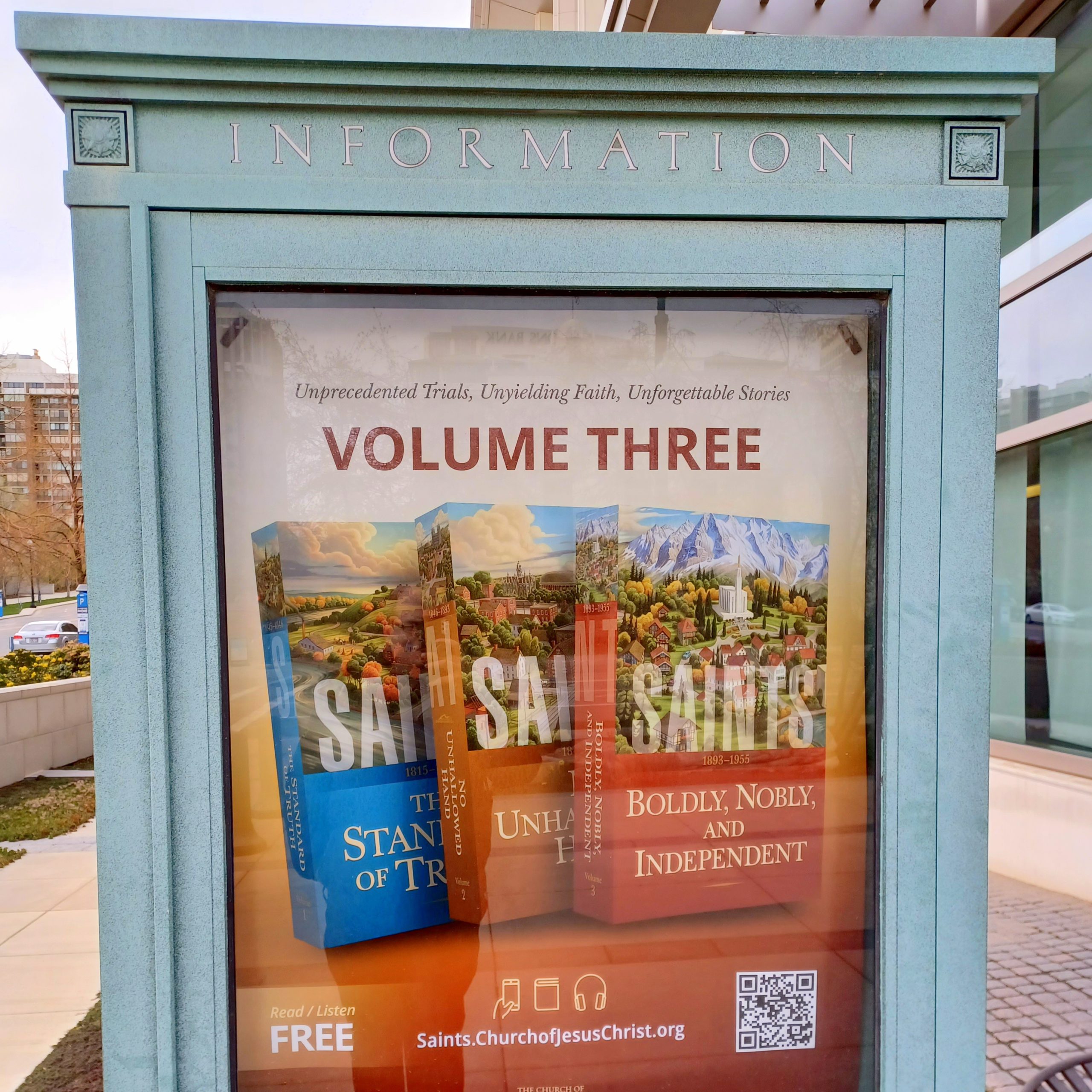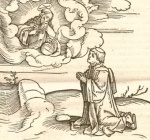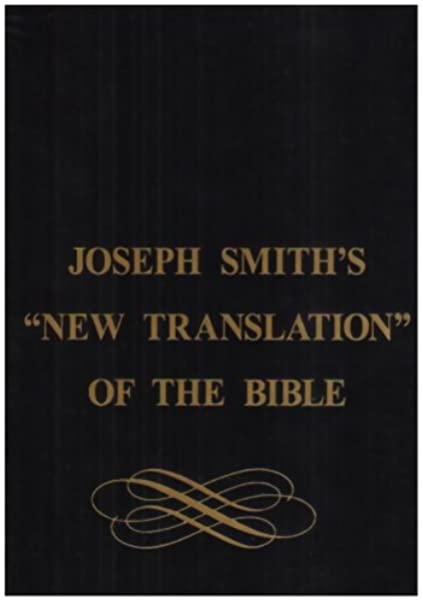Category: Mormon Studies
-
Top Mormon Studies Amateurs
Mormon Studies is relatively open-minded when it comes to accepting the contributions of amateurs. Here I am defining amateurs as people who are not employed by academia as their main gig, whether or not they have a graduate degree–some do, some don’t; also, here I am defining “Mormon Studies” broadly, as any original research endeavor…
-
Idiosyncratic ranking of the “Let’s Talk About” series from Deseret Book
This is, I think, the best thing to come out of Deseret Book in a long while. I somewhat wish these books had existed when I was much, much younger, but the expertise (and, frankly, spiritual maturity of many members) likely didn’t really exist in the right forms until recently. What follows is my totally…
-

VIII. Catalyst theories of revelation
The previous posts have put us in the vicinity of catalyst theories of revelation, but none of the formulations that I’ve seen are adequate for describing the Book of Abraham translation, and I think “catalyst” is the wrong chemical metaphor.
-

VII. The GAEL and Linguistic Typology
The GAEL provides for a mode of interpretation that finds expansive (but not unlimited) meaning in seemingly simple characters. Zakioan-hiash, as we have seen, is both a name, a word with a specific phonetic realization, and the equivalent of at least one sentence.
-

VI. Non-Egyptian Linguistic Influences on the GAEL
Champollion – and Egyptian – aren’t the only influences on the GAEL.
-

V. The GAEL’s Degrees and the Structure of Abraham 1:2b-3
Two related features of the GAEL that have been the focus of the most controversy and puzzlement are how one character might represent much longer English texts, and the GAEL’s use of a five-fold system of degrees to expand a character’s potential meaning.
-

IV. The GAEL and the structure of Abraham 1:1-2a
In his 2009 article, Chris Smith argued for the textual dependence of the Book of Abraham on the GAEL. While Dan Vogel’s recent book about the Book of Abraham and related apologetics strenuously objects to any suggestion that the GAEL was reverse engineered from the translation of Abraham, Vogel nevertheless entirely rejects the basis of…
-

III. What Joseph Smith Knew About Champollion
With the preliminary deliberations out of the way, it’s time for a close look at the GAEL.
-

I. Putting the grammar back in GAEL
Scholars from seemingly every corner of Mormon Studies agree: While working on the Egyptian papyri, Joseph Smith and his associates were either unaware of Champollion’s recent work to decipher Egyptian hieroglyphics, or simply unaffected by the recent advances in Egyptology. Not only is this position untenable, it’s demonstrably incorrect.
-
Imperial Zions
Latter-day Saints in the 19th century existed at a paradoxical intersection of American history. When they fled to Alta California to settle the Great Basin, they were refugees fleeing from the United States. Defiantly practicing plural marriage in the face of federal laws that opposed the principle, they came to face a heavy-handed effort by…
-
Clarifications on Uto-Aztecan
This post by Brian Stubbs, a well-respected linguist with numerous publications on the history of Uto-Aztecan languages, is a response to an earlier post by Jonathan Green from 2019. In Times and Seasons, January 6, 2019, Jonathan Green published a post “Uto-Aztecan and Semitic: Too Much of a Good Thing.” A commenter, Steve J,…
-
Relief Society Records
Documents feel like treasures to me. They give insight into the past and have to be mined to get everything you can out of them. Because of that, it’s really exciting that the Church has begun to release minutes from the Relief Society General Board. In a recent interview at the Latter-day Saint history blog…
-
Accuracy of the Journal of Discourses
One of my ongoing dreams is to be able to afford a full set of the Journal of Discourses as part of my collection of Latter-day Saint books (though given the price tag, it probably won’t happen any time soon). In any case, the Journal of Discourses holds an interesting place in the Church of…
-

Saints 3: Thoughts from Scott Hales and Jed Woodworth
I hope by now it’s apparent that I am a fan of the Saints history series and that I’ve been really looking forward to Volume 3, which comes out on the 22nd. I will say, it’s fantastic, but you’ll get to read more of my thoughts next week. Today, however, Kurt Manwaring published an interview with Scott…
-
Let’s Talk about the Book of Abraham–a Review
Kerry Muhlstein’s Let’s Talk about the Book of Abraham Is the latest entry in a series that Deseret Book has been publishing to address controversial or touchy topics in the Church. Based on my experience with Brittany Chapman Nash’s Let’s Talk About Polygamy (the previous volume in this series of books), I had expected something…
-

Making Sense of Prophecies (6): Concluding Thoughts
The question “Did Samuel Lutz really write this” is ultimately not as useful as the question of how the prophecy of “Lutius Gratiano” came about, and what function it served for those who kept it in circulation.
-
John Sillito’s B. H. Roberts: A Life in the Public Arena (book review)
In traditional Christianity, there are significant figures known as the Early Church Fathers who are noted as influential Christian theologians and writers who established the intellectual and doctrinal foundations of Christianity as we know it today. While the Church of Jesus Christ of Latter-day Saints is still a form of Christianity and is indebted to…
-

Making Sense of Prophecies (5): “Lutius Gratiano” in the 20th and 21st centuries
The prophecy of “Lutius Gratiano” has a missing link in its textual history.
-

Making Sense of Prophecies (4): The Origin of “Lutius Gratiano”
With early efforts to locate the text in mind, we can now reconstruct the origin of the prophecy of “Lutius Gratiano.”
-

Making Sense of Prophecies (3): Reconsidering “Lutius Gratiano”
In the prophecy of “Lutius Gratiano,” we have the unusual opportunity to observe the formation and development of a prophecy in some detail.
-

Making Sense of Prophecies (2): How to Read a Prophecy
Earlier scholarship has often understood the function of prophetic texts as providing information about the future.
-
A Summary of the Arrington Mormon History Lecture: “A Marvelous Work: Reading Mormonism in West Africa”
What does Mormonism look like when reconstructed from texts in a non-American cultural context? The self-styled Mormon Churches that developed in West Africa during the 1960s and 1970s (prior to the lifting of the priesthood and temple ban on individuals with Black African ancestry) provide a fascinating glimpse into this question that Laurie Maffly-Kipp explored…
-

Waiting For Saints 3
Three years ago this month, Saints, Volume 1: The Standard of Truth, 1815-1846 was published. Saints, Volume 2: No Unhallowed Hand, 1846-1893 followed about a year-and-a-half later in February 2020. If later volumes had followed the same cadence for releases, we’d have seen Saints, Volume 3: Boldly, Nobly, and Independent, 1893-1955 right around now and…
-
Terryl Givens on Eugene England
In general, the people who are in a position to be most influential in the Church of Jesus Christ of Latter-day Saints have been official Church leaders. That’s not always the case, however, since there are a number of members of the Church who have proven influential and important in different ways—Truman Madsen, Hugh Nibley,…
-
Why Mormon Literature is Vital
Last night poet and author James Goldberg, current president of the Association for Mormon Letters (AML), gave a short but masterful Presidential address as part of the AML’s annual conference. His poetic style and urgent message is quite powerful, despite being just 12 minutes long. Please watch this and let me know what you think!…
-
“It is given to some to speak with tongues”
I served my mission in the Midwestern United States, and we had a decent amount of contact with groups, such as the Pentecostals, who were enthusiastic about charismatic gifts of the Spirit. I remember on one occasion, that a missionary serving in the same district approached me about an investigator they she been working with…
-
Use of the gold plates in Book of Mormon translation accounts
It’s become something of a communis opinio doctorum that Joseph Smith didn’t make use of the gold plates while translating the Book of Mormon.
-

Kent P. Jackson on the Joseph Smith Translation
Joseph Smith’s translation projects have been a hot topic this year. Among many others, earlier this fall we did two posts that discussed the possibility that Joseph Smith relied on the Adam Clarke commentaries for some of the changes he made in the Joseph Smith Translation of the Bible. Recently, Kent P. Jackson (a retired…
-

Concealment and divine prohibition in Book of Mormon translation accounts
A common motif in accounts of the translation of the Book of Mormon is how others beside Joseph Smith were forbidden, prevented, or to the contrary permitted to view the gold plates, the interpreters or the translation process.
-

How the Book of Mormon was translated: a proposal
I propose that there is a continuity of method connecting Joseph Smith’s translations of ancient texts, from the Book of Mormon to his encounter with the Kinderhook plates, and that this method was both expansive and linguistic.
